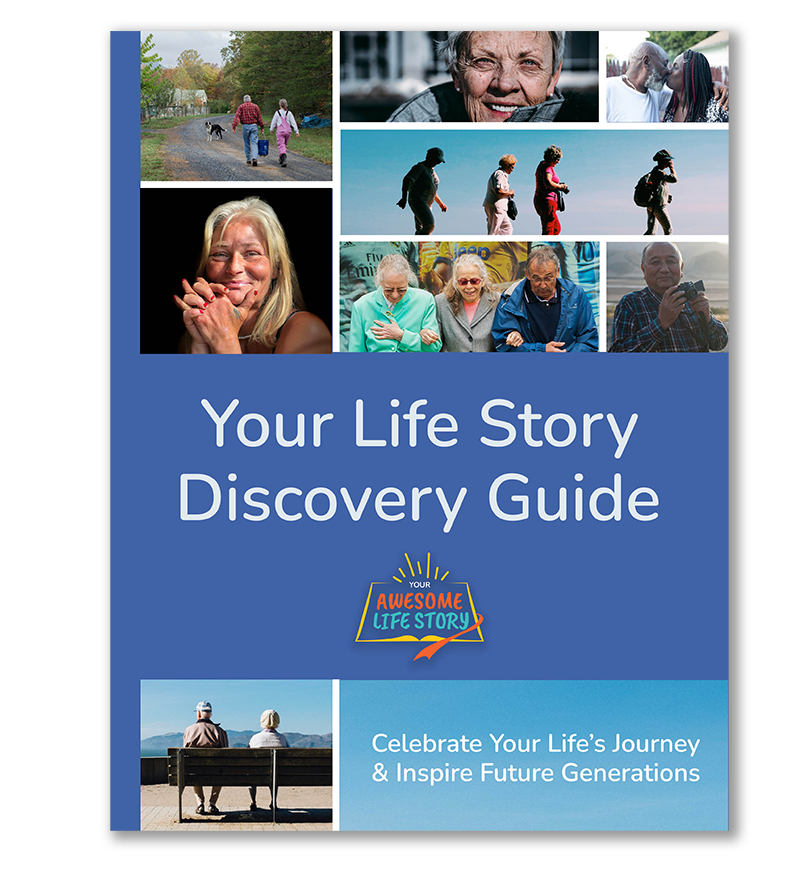When someone sits down to write their life story, they usually start with the events.
“I was born in 1948 in a small prairie town.”
“We moved across the country when I was seven.”
“I graduated in 1966 and joined the military.”
These facts matter. They anchor your story in time and place. But if all we do is list what happened, we’re not telling a story—we’re writing a history report.
And here’s the thing: readers don’t connect with timelines. They connect with emotion.
So how do you go beyond “what happened” and bring your story to life in a way that helps readers truly understand who you are?
Here are some practical and heartfelt ways to add authentic emotion to your life story.
1. Start With How It Felt, Not What Happened
Instead of jumping straight into the facts, ask yourself: What was I feeling in that moment?
- Were you scared?
- Overwhelmed?
- Excited?
- Proud?
For example:
Without emotion:
“We moved to Toronto in 1971. I started a new school that September.”
With emotion:
“When we pulled up to our new apartment building in Toronto, I sat in the back seat and stared at the brick wall outside. I didn’t want to get out of the car. I was 12, and this was my third school in four years. My stomach twisted in knots.”
One version gives information. The other builds connection.
2. Use Specific Details That Trigger Emotion
Readers don’t just want to know what you went through—they want to feel like they were there. And small sensory details are what make that possible.
Think about the five senses:
- What did the room smell like?
- What sounds were in the background?
- What could you hear, see, or touch?
These details evoke emotion without even naming it.
For instance:
“The hallway smelled like lemon cleaner and old library books. I clutched my lunch tray like a shield as I scanned the sea of strangers.”
You don’t need to say “I was nervous.” The reader already knows.
3. Share the Vulnerable Moments
The strongest emotional connection comes from honesty—especially when it’s uncomfortable.
It’s tempting to skip over the hard stuff: the failures, the doubts, the regrets. But that’s often where your story becomes most real.
Think of it this way: when you share your struggles, you give readers permission to relate to you—not just admire you.
You can write about:
- The moment you felt completely lost
- A decision you regret
- A mistake that changed your life
- The time you felt ashamed—or incredibly proud
Remember: you don’t need to share everything. Just enough to help someone feel, “Ah, I’ve felt that too.”
4. Reflect on What It Meant to You
Emotion often comes from reflection—looking back and giving meaning to something that didn’t make sense at the time.
Try asking:
- What did I learn from this?
- How did it change me?
- How do I feel about it now?
These questions help move your story beyond what happened to you, and into what it meant for you.
For example:
“At the time, I thought being laid off was the worst thing that could happen. But looking back, it gave me the chance to finally chase the career I’d dreamed of since I was 20.”
5. Talk Like You’re Speaking to Someone You Love
Imagine you’re telling your story to your child or grandchild. Someone you want to know the real you.
What would you say differently?
You might:
- Use more warmth and humor
- Be a little more honest
- Share your feelings more openly
This shift in tone often brings out the emotion naturally—because you’re no longer just writing about your life, you’re sharing it with someone who matters.
Bottom Line?
If your story feels dry or distant, try leaning into the feelings behind the facts. Emotion is what turns a list of events into a meaningful journey. It’s how readers get to know you—and maybe even feel changed by what you’ve shared.
Because in the end, we don’t remember stories for the dates and details.
We remember how they made us feel.
>> If you haven’t got started on writing your own life story, learn about our course here… and we’ll show you the way.
Download your FREE copy of the Life Story Discovery Guide…

Your privacy is protected, and you’re free to unsubscribe at any time.

